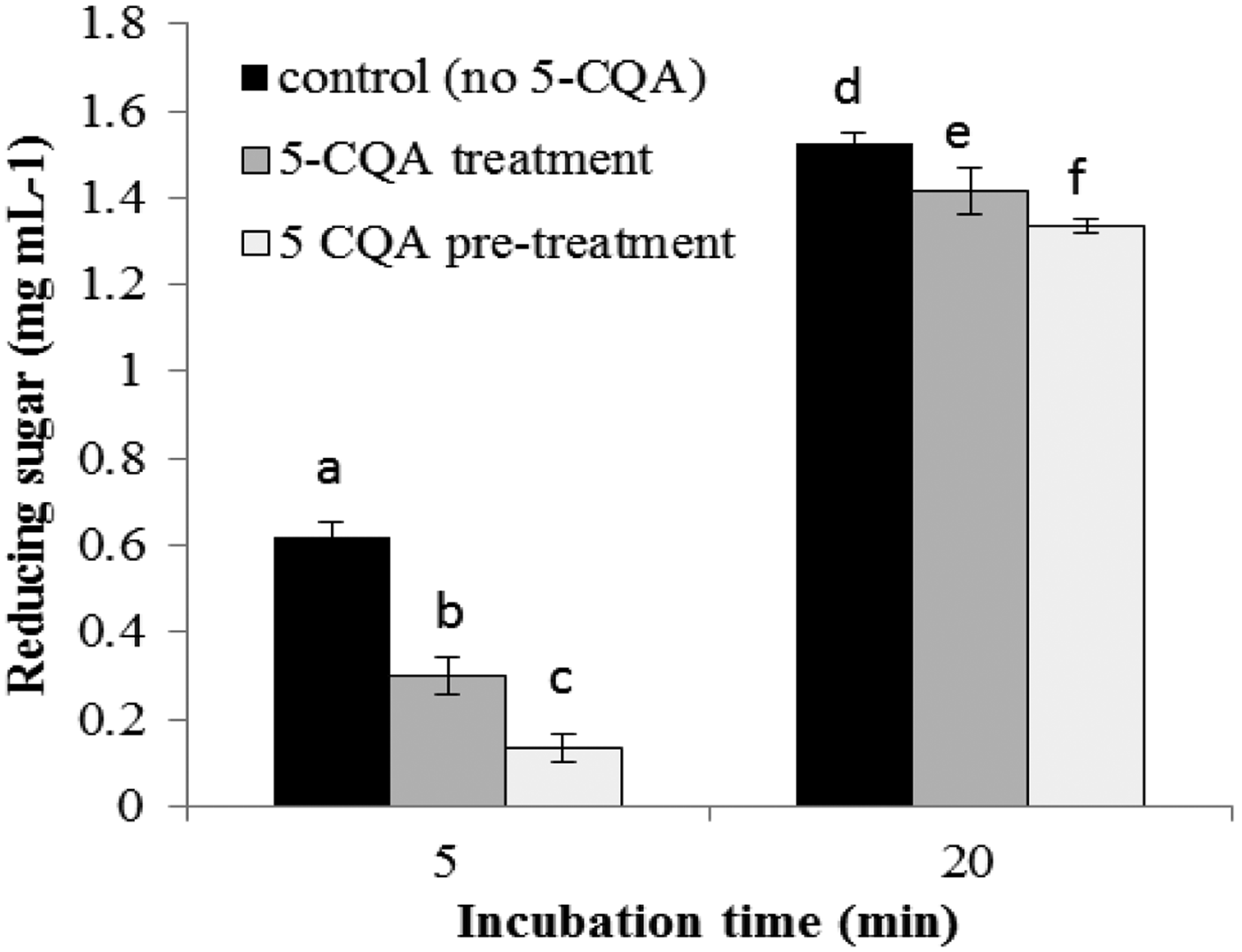Potatoes are the fourth most important crop in the world and the most consumed vegetable in the UK. Chlorogenic acid (5-caffeoylquinic acid, 5-CQA) is the predominant phenolic acid in potatoes(Reference Mattila and Hellstrom1) and it has been shown to inhibit the activity of alpha amylase when tested on artificial substrates(Reference Narita and Inouye2). The aim of this project was to investigate the inhibition of porcine pancreatic alpha amylase by 5-CQA at levels expected in potato tissue and also using potato starch as a substrate. The results could support the hypothesis that potato varieties with high 5-CQA levels would have lower glycaemic effects than those with lower levels.
The inhibitory effects of different concentrations of 5-CQA (0−2 mg mL−1) on the activity of porcine pancreatic α- amylase (0·33 units mL−1) on potato starch (0·83–6·6 mg mL−1) was examined. 5-CQA was added to the enzyme-substrate mixture at the start of the reaction or was pre-incubated for 10 minutes with the enzyme prior to addition of the substrate. Reducing sugar released was measured using the 3,5-dinitrosalicylic (DNS) colorimetric method at two reaction times (5 and 20 min). Reactions were carried out at 37°C in 20 mM sodium phosphate buffer pH 6·9 containing 6·7 mM NaCl. All reactions were carried out in triplicate.
The percent of inhibition for various concentrations of 5-CQA (2, 1·5 and 1 mg/ml) without pre-incubation were 45·69%, 25·15% and 3·47% respectively after 5 min of enzymatic reaction. Fig. 1 shows that the inhibition was more pronounced at 5 min compared to 20 min reaction time. Pre-incubation of the enzyme with 5-CQA (at 1·5 mg mL−1) led to a small but significant decrease in activity, observed at both reaction times (P < 0·05).

Fig. 1. Effect of 5-CQA (1.5 mg mL-1) on amylase activity; n = 3, error bars = SD, a,b,cp < 0.05 and d,e,f p < 0.05 at same time point and different treatments .
The mechanism of inhibition was investigated by kinetic analyses. The Hans-Woolf plot (Fig. 2) and kinetic parameters (table below) show that 5-CQA decreased the Vmax and increased the Km of pancreatic alpha amylase, indicating a mixed-type inhibition mechanism when using potato starch as a substrate.

Fig. 2. Hans-Woolf plot at various 5-CQA concentrations.
The results of this study provide evidence that 5-CQA at concentrations found in food could reduce digestibility of potato starch with potential consequences on carbohydrate availability.





